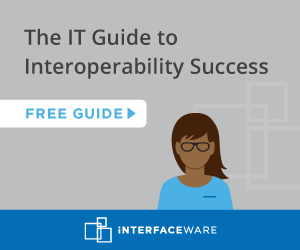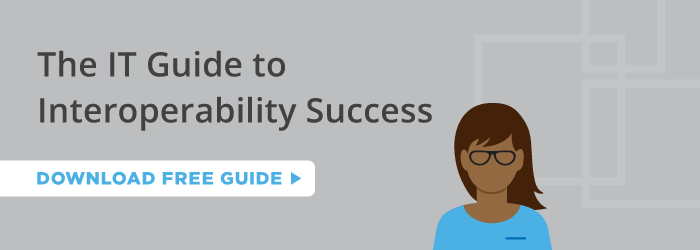Everyone in the healthcare industry is talking about the Bundled Payments for Care Improvement (BPCI) initiative set up by the CMS. With over 75% of hospitals in America using EHRs, being able to comply with the initiative will require great focus on IT. Specifically, hospitals will need to ensure every department is well connected to one another, to central billing systems, and to the patient’s EHR. Essentially, for hospitals to comply, they will need to focus heavily on interoperability.
First and foremost, hospitals need to understand their capabilities and limitations within their integration landscape. Most hospitals with an EHR system also have an integration engine – many have more than one.
 Hospitals who use more than one integration engine will need to reconfigure their interfaces on both systems to ensure proper data capture to deliver holistic care and manage the bundled payment. Hospitals who use one engine for all of their integration needs will have a far easier time managing their interfaces.
Hospitals who use more than one integration engine will need to reconfigure their interfaces on both systems to ensure proper data capture to deliver holistic care and manage the bundled payment. Hospitals who use one engine for all of their integration needs will have a far easier time managing their interfaces.
Hospitals that use graphical mapping, or a combination of graphical mapping and scripting for their interfaces will face challenges understanding the original logic and flow for the interfaces in order to be able to properly change them. The complexity of the interfaces, and the length of the graphical map, will impact how fast the IT team can first understand, then revise the interface. Code is generally written once, but read many times. Scripting will allow the IT team to quickly recognize what part of the interface requires change, and revise the code accordingly. The more robust the scripting tool, the easier it is to make changes to the code.
EHR vendors that manage integration for hospitals will have the ability to control a hospital’s speed. Depending on when the EHR vendor is prepared to offer their services, hospitals may be waiting up to a year to begin restructuring their interfaces. Hospitals that have an integration engine that can be managed in-house will be able to begin implementing changes immediately.
Cardiac bundled payments are now mandatory – and cardiac failure is the second most commonly diagnosed disorder in America. There is no escaping bundled payments. This change can be a great opportunity for hospitals to look at their integration infrastructure and make sure they are using best practices and have a strong foundation so they can be prepared for any new changes that come up.

